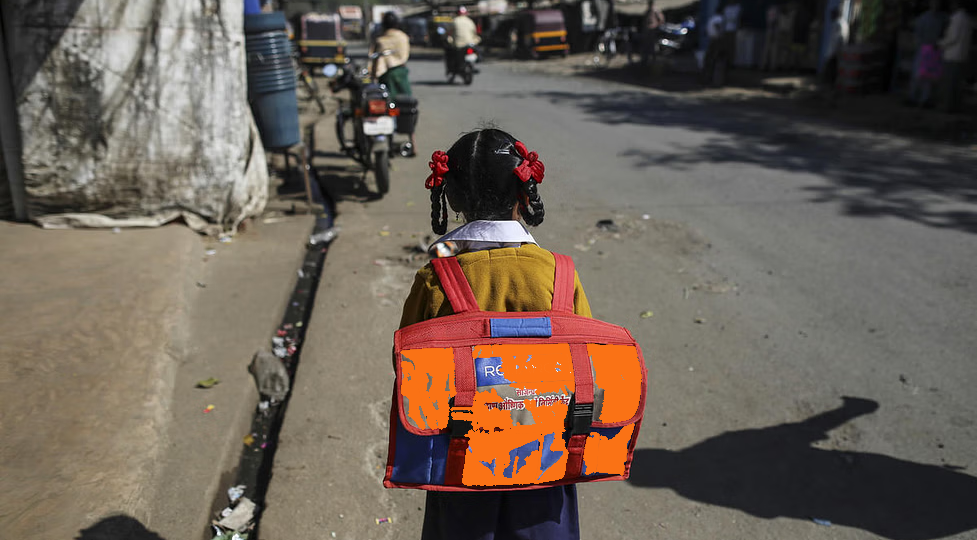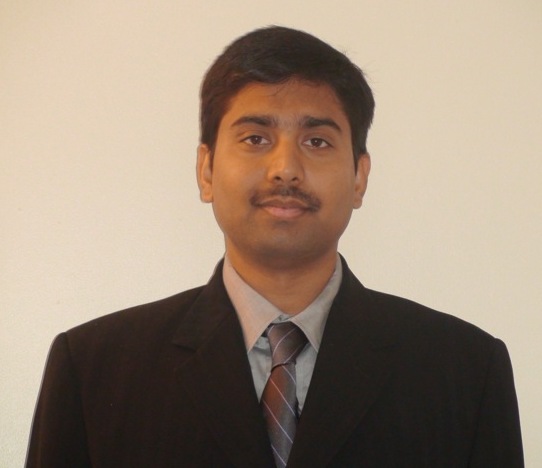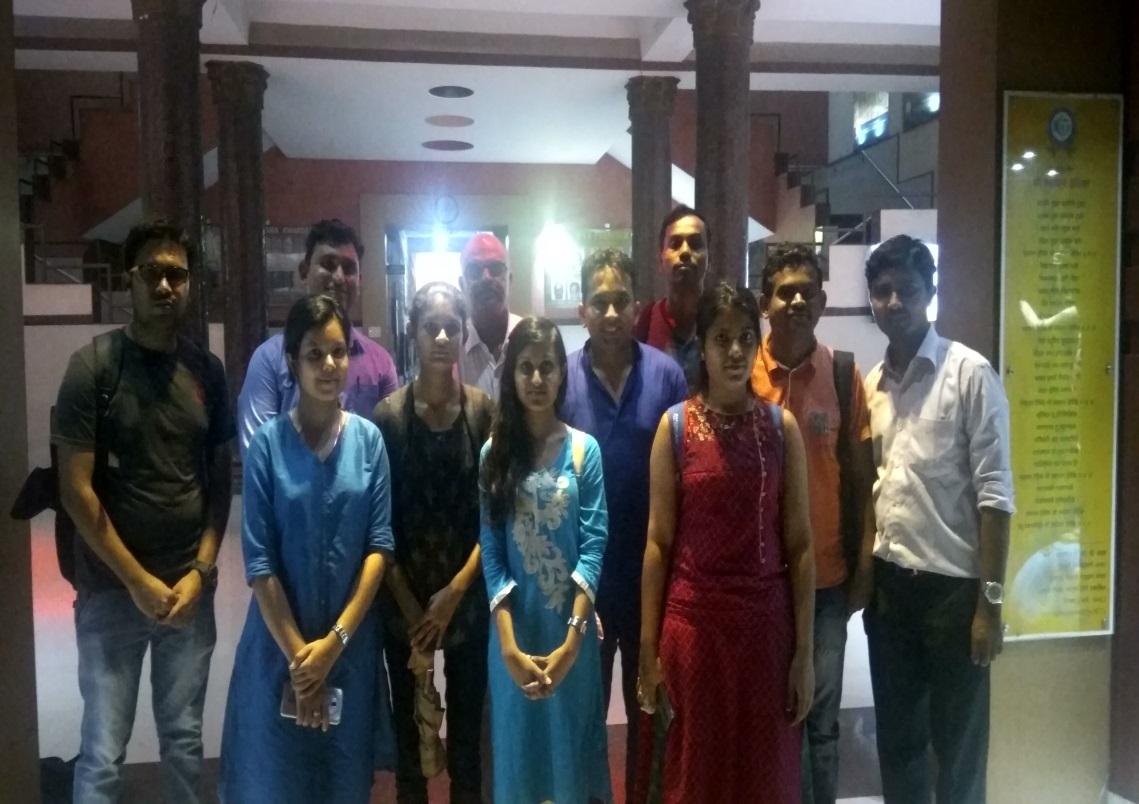Redant
The textbook revision committee for classes 1-10 constituted by the Karnataka state government and headed by Rohith Chakrathirtha has created a storm in the state. Apart from the derisive insults that Chakrathirtha has made against leading Dalit-Bahujan writers and activists, his sexist posts on social media have also gone viral.[i] The committee has also come under fire for heavily editing or dropping important content about the lives and works of figures such as Babasaheb Dr. B. R. Ambedkar (henceforth, Babasaheb), Basavanna, Periyar, and Savitribai Phule, among others, and including works by brahmanical writers instead.
A coalition of Dalit and Leftist groups[ii] that are at the forefront of fighting caste/ism and communalism in Karnataka initially led the opposition to the constitution of the committee itself and proposed changes. The issue escalated once the reported changes were shared in the public domain. Apart from renowned Kannada writers, led by Devanooru Mahadeva, withdrawing permission to use their works in the textbooks and other litterateurs resigning from prestigious positions, Karnataka civil society has also strongly come out against the proposed changes.
The latest entrants to the controversy are seers. Sri Nirmalanandanatha Swamiji, the head of the Adi Chunchanagiri Math widely seen as representing the dominant Vokkaliga community, has asked for action against Chakrathirtha for posting on social media a cheap and childish parody of the state anthem penned by Kuvempu from the community. Sri Panditaradhya Shivacharya Swamiji of the Sanehalli Math and Sri Basava Jaya Mrutyunjaya Swamiji of the Kudalasangama Panchamasali Peetha, both of which are identified with the Lingayat community, have also threatened a state-wide agitation if the changes to the chapter on the founder of the Lingayat religion,[iii] Basavanna, are not reversed. This has arguably politicised the issue along caste lines.
Much ink has been spilt on documenting the devastating effects of what is being termed as ‘saffronisation’ of textbooks. This is, no doubt, an urgent task. This essay, however, has a different goal in mind. I want to draw attention to the central but often elided role of Brahmin/ism in the caste politics of Karnataka. Analytical energies in recent times has rightfully shifted towards understanding the role of Shudras/OBCs, especially those from dominant castes and groups, in casteist violence against Dalits. This is a laudable move and much needed.
However, I believe that one of the key effects of this turn has been the growing invisiblisation of Brahmin/ism, so much so that in some extreme versions, Brahmin/ism is presented as being reformed of its very caste/ism with OBCs taking over the mantle from Brahmins. I want to challenge this line of thinking by illuminating the structural position that Brahmin/ism enjoys in Indian society and especially under the current dispensation, which, I humbly submit, is unavailable to any other group, including numerically and economically dominant feudal castes. This makes it imperative that Brahmin/ism always be a critical part of anti-caste work in Karnataka and, dare I say, elsewhere.
Why Change Textbooks?
One of the first things that the BJP and the Sangh do upon coming to power is to interfere in education and history, noted the Kannada Dalit writer Devanooru Mahadeva.[iv] His words are prescient. Soon after the party came to power,[v] BJP MLA of Madikeri (a heavily saffronised constituency), Appachu Ranjan, approached the then Primary and Secondary Education Minister, S. Suresh Kumar, in 2019 asking for the removal of a chapter on the Mysore king, Tipu Sultan, for containing “wrong information”. This led to the setting up of a three-person special committee by the Karnataka Textbook Society (KTBS) to review the chapter. The committee eventually recommended not to drop the lesson but to teach Tipu Sultan without glorifying him.[vi]
The immediate provocation behind the setting up of the revision committee, however, seems to have been a complaint by the Karnataka Brahmin Development Board alleging that content in the class 6 social science textbook was insulting to the community.[vii] The supposedly offensive excerpt talks about how the performance of costly havanas caused a food scarcity during Vedic times. The then Chief Minister, B. S. Yediyurappa, directed Kumar to look into the matter, which led to a chain of events, including the constitution of the current revision committee.
What is interesting here is that when other dominant castes or groups complain, it is usually about the misrepresentation of a particular icon or event connected to that group. The complaint is then reviewed by a government-appointed committee and any ‘offensive’ content revised. On the surface, the complaint by the Brahmin board also follows this pattern. But what is different here is that the state government seems to have used it as an opportunity to launch a comprehensive review of all textbooks from classes 1-10, leading to substantive revisions to history and Kannada textbooks. This needs more attention.
A committee was constituted with Chakrathirtha, a known Hindu right-winger and math teacher, as the head with six other members. It appears that six of the seven members of the committee, including the head, are Brahmins.[viii] In addition, Chakrathirtha’s qualifications to lead the committee are unclear. In response to the growing criticism against his appointment, the current Primary and Secondary Education Minister, B. C. Nagesh, called him an IIT and CET professor (the latter a non-existent position as CET is the short form of Common Entrance Test, an entrance test used to allocate engineering and medical seats before NEET), leading to widespread trolling. Chakrathirtha has since clarified that he has a M.Sc. from a college in Tamil Nadu and was involved in training students for competitive exams to the IIT, CET, etc.[ix]
The Ensuing Mess
The committee has submitted its recommendations amidst growing opposition. It was dissolved as I was wrapping up this essay with the government indicating that the group has now completed its job. Apart from committing to revisit the chapter on Basavanna and add a new chapter on Kempegowda (a Vokkaliga icon) who is popularly associated with the founding of Bengaluru,[x] there is no indication that the state government has taken any other demands seriously. In fact, the chief minister Basavaraj Bommai announced that the chapter on the founder of RSS, K. B. Hedgewar will be retained.[xi]
While all the changes made to the textbooks are yet to be made public, some information is available in the public domain. As many had predicted, the committee has gone after content and writers deemed as espousing a different—i.e., pluralistic—worldview than the Sangh’s. But there is an organizing logic that informs these changes that continues to be largely misnamed. Let me elaborate.
It appears that the committee has not only excised content on radical anti-caste figures such as Narayana Guru and Periyar, but the works of prominent Kannada writers such as P. Lankesh, Sara Aboobacker, L. Basavaraju, and A. N. Murthy Rao have also been left out. Boluvar Mohammed Kunhi, Prof. Chandrashekar Talya, and Do Saraswati, one of Kannada’s leading Dalit writers, wrote to the committee asking it to drop their texts, only to find out that they had already been left out.[xii] In addition, chapters on Basavanna and Ambedkar have been heavily edited to fit the Brahmanical interpretation of these figures. There are also other sly rhetorical moves that need attention.
But this is only one side of the proverbial coin, as Chakrathirtha had announced that works on Sanatana Dharma and Vedic society would find place in the new curriculum to ensure “completeness of chapters”.[xiii] In keeping with this orientation, we find the addition of writers sympathetic to the Sangh, almost all of whom are Brahmins. Included in the new curriculum is a speech on nationalism by Hedgewar. Keeping him company are Ganesh Shatavadhani and Bannanje Govindacharya. If one is a scholar of the Sanskrit literary process of avadhana, Govindacharya is a well-known commentator on Madhva scriptures and gives sermons on religious and spiritual topics, which are widely available on the Internet.
Last but not the least, the partisan nature of the revisions comes into sharp relief with the inclusion of a chapter by Chakravarty Sulibele titled Taayi Bharatiya Amara Putraru (The immortal sons of Mother Bharati).[xiv] A writer and a regular speaker at Sangh Parivar events, Sulibele is a self-proclaimed nationalist who has made a career out of peddling the Sangh’s regressive understanding of nationalism. He founded an organisation called NaMo Brigade with the goal of working towards getting Narendra Modi elected as the prime minister of India.[xv] It has since been renamed as the Yuva Brigade and works based on the principles of Swami Vivekananda to inculcate patriotism among youth.[xvi] The brief context I have provided above should help the reader imagine what the chapter by Sulibele will contain.
SaffronisationBrahmanisation
Predictably and rightfully, social media is abuzz with allegations of saffronisation of textbooks. But I cannot help but ask: what precisely is saffronisation? Some readers may answer this question as the skewing of textbooks to suit the ideological and political interests of the Sangh, particularly its ethnonationalistic version of history, through the suppression of other viewpoints, even if it means foregrounding an imaginary past instead of facts.
But whom does the Sangh represent? Are all those who (knowingly or unknowingly) fall under the category of ‘Hindus’ ranging from dominant feudal castes to backward ones, allowed to determine the changes that constitute ‘saffronisation’? In turn, are the so-called benefits of saffronisation equally felt by all groups? For instance, which caste determined that content on Narayana Guru and Periyar be dropped? Which caste or group is served through editing the chapter on Basavanna and Dr. Ambedkar or which community has excised L. Basavaraju, P. Lankesh, and Sara Aboobacker from the curriculum, only to replace them with Hedgewar, Shatavadhani, and Sulibeli?
It is here that I believe that attention to Brahmin/ism becomes imperative. In other words, the organising logic of saffronisation is Brahmanism. My point is that no other group, including numerically and economically dominant caste groups who are often at the forefront of anti-Dalit violence, exercise the sort of ideological and official pull that the revision of textbooks in Karnataka has exposed. As I noted earlier, when these other caste groups make specific demands on the state, it is often around the alleged misrepresentation of an icon or event connected to them. Their ideological aspirations are limited in this manner and rarely aspire to reinterpret History[xvii] for the entire state or country.
Put differently, what I am drawing attention to is how Brahmin/ical vision defines ‘India’ or ‘Karnataka’ itself is in a manner that no other group can aspire to. Calling this process saffronisation only helps hide the caste identity of the group that disproportionately guides it. What will be taught to students attending government schools in Karnataka from classes 1-10 is a version that suits the interests of Brahmin/ism. It is from this version that all other histories (with a lower-case ‘h’) spring, including the imagined history of royal blood and lineage that many dominant feudal OBC groups invent for themselves, and which is one of the key causes of violence against Dalits.
Let me provide an example. The revised chapter on Basavanna (widely available on social media) notes that he left for Kudalasangama after his upanayana and took Lingadeekshe from a Shaiva guru. More importantly, it adds that Basavanna developed Veerashaivism. This version flies in the face of hagiographic as well as community accounts that Basavanna rejected upanayana as it was denied to his elder sister, Akka Nagamma or Nagalambike,[xviii] who eventually became the first convert to Lingayatism. More importantly, it neatly folds Basavanna into Veerashaivism, even though this is precisely at the heart of the controversy on the relationship between Lingayatism and Veerashaivism. Veerashaivas accept the sanctity of the Vedas.[xix] By aligning Basavanna with Veerashaivism and therefore subsuming him in the Shaivite tradition of Hinduism, the Lingayat struggle for independent religion status is dealt a silent blow.
The mischief that this rendering of Basavanna plays cannot be underestimated. By accommodating Lingayats as a caste, anti-casteism is excised from Lingayat philosophy, even though, in my reading, it is the founding impulse behind the Sharana movement of which Basavanna was a key member. More importantly, by accommodating them as a caste and giving them a false casteist genealogy—i.e., as an upper caste—Lingayat investments in caste supremacy is reinforced.
Does All Of This Matter?
My point in writing this piece is not to cut slack for OBCs, the group that I belong to. Anti-Dalit violence is reprehensible and should be condemned irrespective of whichever quarter it comes from.
But the growing role of Brahmin/ism in all sectors of our lives from the civil society to the state, combined with its invisibilisation under terms such as saffronisation, can only be ignored at great social peril. This is brought to sharp relief when we look at the textbook controversy. The complaint of the Brahmin board seems to have been the immediate trigger for the state government to revise the textbooks from classes 1-10. Save for one, the seven-member revision committee was comprised of Brahmins. More importantly, the works that have been included and the revisions effected uphold the interests of Brahmin/ism more than that of any other caste or religious group.
Hence, it is clear that Brahmin/ism is the logic that organises what is being termed saffronisation. The new content is not only going to disproportionately impact Dalit and OBC students who comprise a majority of the student body attending government schools,[xxi] but will also intensify conservatism in society, leading to a magnification of communalism, caste/ism, misogyny, and other regressive ideologies. This should be a cause of concern.
~
Notes
[i]Chakrathirtha has made derogatory comments against Devanooru Mahadeva, who is Kannada’s ethical consciousness and leading voice against the growing communalisation of society. The others targeted by him include the state poet, Kuvempu, along with a number of sexist posts, which have all since gone viral.
[ii] My own understanding is that except in the coastal region, Muslim groups are keeping a low profile because of the real threat of state violence and backlash from Sangh Parivar groups. However, Muslims individually continue to heavily participate in progressive causes.
[iii]Lingayats are popularly considered as a caste in Karnataka and elsewhere, even though different occupation-based groups that come under the umbrella of Lingayat are categorised as ST, SC, and OBC (my own community of Lingayat weavers comes under the 2A backward classes category). The Siddaramaiah-led Congress government also recommended to the central government to grant Lingayats independent religion status, which was subsequently refused. The matter is still pending. As such and based on my own understanding of Lingayatism as an anti-Vedic movement, I refrain from referring to Lingayats as a caste other than when referencing media reports that frame the community this way.
[iv]https://www.thenewsminute.com/article/two-kannada-writers-want-their-stories-withdrawn-revised-textbooks-amid-row-164340
[v]It needs to be reiterated that unlike north Indian states where the BJP is in power, it did not gain an absolute majority in Karnataka but came to power after initiating ‘Operation Kamala’, which included the poaching of MLAs from other parties after promising them plum posts.
[vi]https://indianexpress.com/article/cities/bangalore/tipu-sultan-chapters-should-be-retained-in-karnataka-textbooks-expert-committee-report-6162343/
[vii]https://www.hindustantimes.com/education/karnataka-govt-to-remove-textbook-content-that-hurt-feelings-of-brahmins/story-2T8g6RhRjA3BU0gEXwx4KI.html
[viii]I have relied upon last names to ascertain the caste status of the members. What has also compounded this phenomenon is the defensiveness of the committee in addressing caste as Chakrathirtha maintains that the invocation of caste is itself casteism, which is a common rhetorical move among upper castes to evade questions about caste.
[ix]https://indianexpress.com/article/education/i-take-criticisms-against-me-very-positively-rohith-chakrathirtha-on-ongoing-textbook-row-in-karnataka-7939995/
[x]This was not one of the original demands placed before the government, as far as I can tell. Rather, this move seems to be clearly aimed at appeasing the Vokkaliga community following widespread outrage over the slight to Kuvempu, who is also from the community.
[xi]https://www.deccanherald.com/state/lesson-on-rss-founder-wont-be-dropped-from-textbook-bommai-1115260.html
[xii]https://naanugauri.com/chakrathirtha-committee-which-has-abandoned-further-popular-literary-texts/
[xiii]https://www.news9live.com/state/karnataka/sanatana-dharma-to-be-included-in-school-textbooks-questions-arise-over-intent-behind-change-162456
[xiv]https://www.republicworld.com/education/news/row-erupts-over-bjp-loyalist-chakravarthi-sulibeles-lesson-in-karnataka-class-10-textbook-articleshow.html
[xv]https://www.daijiworld.com/news/newsDisplay.aspx?newsID=237177
[xvi] https://yuvabrigade.net/know-us/
[xvii]By capping History, I am referring to the entire edifice of documenting and narrating the past. This includes historiography (questions of method, proof, etc.) but also the organising thematics of the history of a region whose repercussions go beyond one community or province.
[xviii]Samartha, M. P. (1977). Basava’s Spiritual Struggle. Religious Studies, 13(3), 335–347. http://www.jstor.org/stable/20005425
[xix] https://www.business-standard.com/article/current-affairs/making-sense-of-lingayat-vs-veerashaiva-debate-what-gauri-lankesh-thought-118032000237_1.html
[xx]https://timesofindia.indiatimes.com/india/school-enrolment-data-indicates-45-obcs-19-dalits-in-india/articleshow/84877162.cms
~~~
Redant was born and raised in Bengaluru and currently works in the U.S. His interest broadly revolves around questions pertaining to Kannada identity construction and caste/ism with a specific focus on the intersections between Dalit and Lingayat worlds. He discovered Babasaheb and Basavanna belatedly, but he is glad that they are in his life as they have changed how he understands the world. He hopes to do whatever he can to contribute to the fight against caste/ism even as he learns more about its pervasiveness every day.










